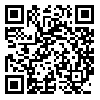دوره 17، شماره 17 - ( 2-1398 )
جلد 17 شماره 17 صفحات 60-47 |
برگشت به فهرست نسخه ها
Download citation:
BibTeX | RIS | EndNote | Medlars | ProCite | Reference Manager | RefWorks
Send citation to:



BibTeX | RIS | EndNote | Medlars | ProCite | Reference Manager | RefWorks
Send citation to:
Lenjannejadian S, Reisi J. A new activity based balance index in elite adolescent soccer players. RSMT 2019; 17 (17) :47-60
URL: http://jsmt.khu.ac.ir/article-1-364-fa.html
URL: http://jsmt.khu.ac.ir/article-1-364-fa.html
لنجان نژادیان شهرام، رئیسی جلیل. شاخص جدید تعادل در هنگام فعالیت برای بازیکنان فوتبال حرفهای نوجوان. پژوهش در طب ورزشی و فناوری. 1398; 17 (17) :47-60
، jalil_reisi@yahoo.com
چکیده: (8898 مشاهده)
تعادل مفهومی پیچیده است به ویژه هنگامی که یک فرد بخواهد مهارت حرکتی پیچیدهای را انجام دهد؛ بنابراین، تعادلِ در هنگام فعالیت به لحاظ عملکردی نسبت به تعادل ایستا و پویا، که بدون اجرای مهارت انجام میشود، از اهمیت بیشتری برخوردار است. هدف از این پژوهش ارایه شاخص جدید تعادل هنگام فعالیت در بازیکنان فوتبال حرفهای بود. 27 نفر از نوجوانان (12-14سال) حاضر در لیگ برتر فوتبال ایران در این پژوهش شرکت نمودند. به منظور سنجش تعادل، فعالیت و مهارت بازیکنان از آزمونهای تعادل ایستا، دینامیک، دویدن و دریبلزدن استفاده شد. در مدت انجام این آزمونها علاوه بر امتیاز متناسب با هر آزمون، شتاب مرکز بدن با استفاده از شتابسنج ثبت و با تحلیل آن شاخص تعادل هنگام فعالیت محاسبه شد. نتایج، ضریب همبستگی مثبت و معنیداری را میان شاخص تعادل با امتیاز تعادل ایستا و پویا نشان داد (0/002p=، 0/6r=)؛ همچنین، میان نمره شاخص تعادل با امتیاز مهارت دریبلزدن همبستگی منفی و معنیدار مشاهده گردید (0/026p=، 0/45r=-) که میتوان آن را به لزوم چابکی بازیکن تفسیر کرد. از نتایج این پژوهش چنین استنباط میشود که شاخص معرفیشده نه فقط برای تعادل بلکه برای بررسی مهارت بازیکن نیز موفق بود.
نوع مطالعه: پژوهشي |
دریافت: 1398/8/1 | پذیرش: 1398/8/1 | انتشار: 1398/8/1
دریافت: 1398/8/1 | پذیرش: 1398/8/1 | انتشار: 1398/8/1
فهرست منابع
1. McGinnis, P. (2013). Biomechanics of sport and exercise: Human Kinetics.
2. LeVeau, B.F. (2010). Biomechanics of human motion: basics and beyond for the health professions: Slack Incorporated.
3. Seimetz, C., Tan, D., Katayama, R., Lockhart, T. (2012). A comparison between methods of measuring postrual stability: force plates versus accelerometers. Biomedical Sciences Instrumentation. 48:386-92.
4. Bressel, E., Yonker, J.C., Kras, J., Heath, E.M. (2007). Comparison of static and dynamic balance in female collegiate soccer, basketball, and gymnastics athletes. Journal of Athletic Training. 42(1):42-6.
5. Matsuda, S., Demura, S., Uchiyama, M. (2008). Centre of pressure sway characteristics during static one-legged stance of athletes from different sports. Journal of Sports Sciences. 26(7):775-9. [DOI:10.1080/02640410701824099]
6. Plisky, P.J., Gorman, P.P., Butler, R.J., Kiesel, K.B., Underwood, F.B., Elkins, B. (2009). The reliability of an instrumented device for measuring components of the star excursion balance test. North American Journal of Sports Physical Therapy. 4(2):92-9.
7. Karimi, M.T. (2016). Stability Analysis Theories, Strategies and Mechanisms of Evaluation. 117 p.
8. Winter, D.A. (1995). Human balance and posture control during standing and walking. Gait & Posture. 3(4):193-214. [DOI:10.1016/0966-6362(96)82849-9]
9. Mayagoitia, R.E., Lötters, J.C., Veltink, P.H., Hermens, H. (2002). Standing balance evaluation using a triaxial accelerometer. Gait & Posture. 16(1):55-9. [DOI:10.1016/S0966-6362(01)00199-0]
10. Scott, B.R., Lockie, R.G., Knight, T.J., Clark, A.C., Janse de Jonge X.A.K. (2013). A comparison of methods to quantify the in-season training load of professional soccer players. International Journal of Sports Physiology and Performance. 8(2):195-202. [DOI:10.1123/ijspp.8.2.195]
11. Naunheim, R.S., Standeven, J., Richter, C., Lewis. (2000). Surgery AC. Comparison of impact data in hockey, football, and soccer. The Journal of Trauma. 48(5):938-41. [DOI:10.1097/00005373-200005000-00020]
12. Jarning, J.M., Mok, K.M., Hansen, B.H., Bahr, R. (2015). Application of a tri-axial accelerometer to estimate jump frequency in volleyball. Sports Biomechanics. 14(1):95-105. [DOI:10.1080/14763141.2015.1027950]
13. Montgomery, P.G., Pyne, D.B., Minahan, C.L. (2010). The physical and physiological demands of basketball training and competition. International Journal of Sports Physiology and Performance. 5(1):75-86. [DOI:10.1123/ijspp.5.1.75]
14. Kinugasa, T., Kilding, A.E. (2009). A comparison of post-match recovery strategies in youth soccer players. The Journal of Strength & Conditioning Research. 23(5):1402-7. [DOI:10.1519/JSC.0b013e3181a0226a]
15. Söderman, K., Alfredson, H., Pietilä, T., Werner, S. (2001). Risk factors for leg injuries in female soccer players: a prospective investigation during one out-door season. Knee Surgery, Sports Traumatology, Arthroscopy. 9(5):313-21. [DOI:10.1007/s001670100228]
16. Alentorn-Geli, E., Myer, G.D., Silvers, H.J., Samitier, G., Romero, D., Lázaro-Haro, C., Ramón, C. (2009). Prevention of non-contact anterior cruciate ligament injuries in soccer players. Part 1: Mechanisms of injury and underlying risk factors. Knee Surgery, Sports Traumatology, Arthroscopy. 17(7):705-29. [DOI:10.1007/s00167-009-0813-1]
17. Murphy, D., Connolly, D., Beynnon, B. (2003). Risk factors for lower extremity injury: a review of the literature. British Journal of Sports Medicine. 37(1):13-29. [DOI:10.1136/bjsm.37.1.13]
18. Dolan, K. (2013). Reactive agility, core strength, balance, and soccer performance: Ithaca College Theses.
19. Paillard, T., Noe, F., Riviere, T., Marion, V., Montoya, R., Dupui, P. (2006). Postural performance and strategy in the unipedal stance of soccer players at different levels of competition. Journal of Athletic Training. 41(2):172-6.
20. Barron, D.J., Atkins, S., Edmundson, C., Fewtrell, D. (2014). Accelerometer derived load according to playing position in competitive youth soccer. International Journal of Performance Analysis in Sport. 14(3):734-43. [DOI:10.1080/24748668.2014.11868754]
21. Reilly, T., Williams, A.M., Nevill, A., Franks, A. (2000). A multidisciplinary approach to talent identification in soccer. Journal of Sports Sciences. 18(9):695-702. [DOI:10.1080/02640410050120078]
22. Ré, A.H., Corrêa, U.C., Böhme, M.T. (2010). Anthropometric characteristics and motor skills in talent selection and development in indoor soccer. Perceptual and Motor Skills. 10(3):916-30. [DOI:10.2466/pms.110.3.916-930]
23. Oliver, G.D., Brezzo, R.D. (2009) Functional balance training in collegiate women athletes. The Journal of Strength & Conditioning Research. 23(7):2124-9. [DOI:10.1519/JSC.0b013e3181b3dd9e]
24. Gabbett, T., Benton, D. (2009). Reactive agility of rugby league players. Journal of Science and Medicine in Sport. 12(1):212-4. [DOI:10.1016/j.jsams.2007.08.011]
ارسال پیام به نویسنده مسئول
| بازنشر اطلاعات | |
 |
این مقاله تحت شرایط Creative Commons Attribution-NonCommercial 4.0 International License قابل بازنشر است. |







